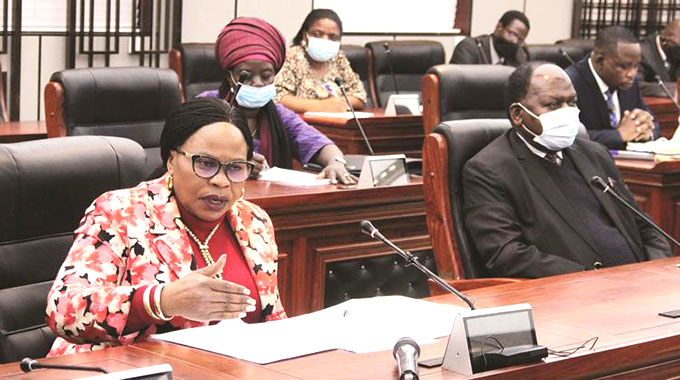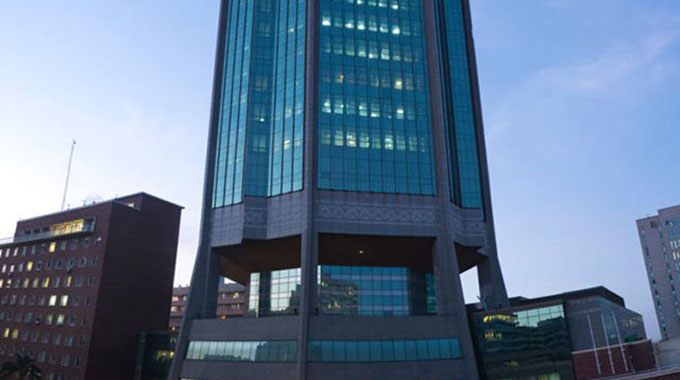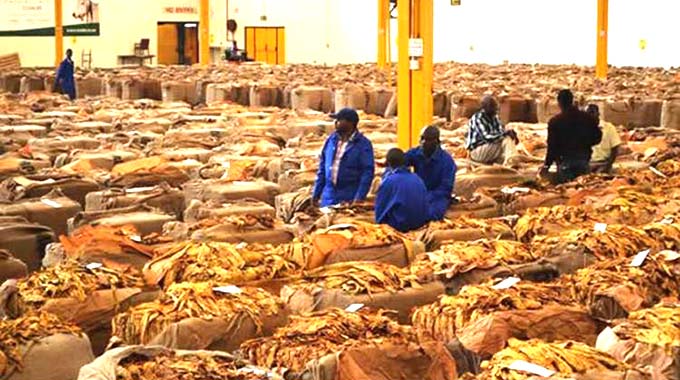Penalties for truck drivers found carrying passengers illegally

Eighteenth Cabinet meeting decisions matrix: June 2, 2020
- Zimbabwe’s Response to the coronavirus (Covid-19) Outbreak: Cabinet considered and adopted a report on the country’s response to the Covid-19 outbreak. The presentation was made by Honourable Vice President KCD Mohadi, as Chairman of the Ad-Hoc Inter-Ministerial Task Force on Covid-19. Cabinet noted that the cumulative rapid screening and PCR tests conducted has reached 45 395 as of June 1, 2020. These are disaggregated as follows: 27 373 rapid screening tests and 18 072 PCR diagnostic tests. As at June 1, 2020, the country has now recorded 203 Covid-19 confirmed cases, compared to the 56 reported on May 24, 2020. The number of those recovered from the pandemic has increased to 29 from the previously reported 25, while the number of deaths remain at four.
The positive cases are mainly returnees from outside Zimbabwe who are in the quarantine centres. The fact that the positive cases are being identified in the quarantine centres demonstrates that the quarantine strategy is bearing results, as the positive returnees are isolated before they can mingle with the general populace. The total number of returnees at the centres is 3 766.
A total of 10 quarantine centres have been identified, one in each province, for use by returning ex-convicts and people of a violent disposition. Improvements are being made to the centres in order for them to meet the requisite security standards. Law enforcement agents are also in the process of beefing up security at the centres in order to curtail incidents of absconding.
In a bid to free schools as quarantine centres, alternative centres, mostly vocational training institutions with a capacity to accommodate 2 636 people, have been identified throughout the provinces. All schools currently being used as quarantined centres are expected to be vacated by June 9, 2020. Hotels and lodges to accommodate returnees who can self-finance during the quarantine period have also been identified.
With regard to education, Cabinet noted the detailed operational plan put in place by the Ministry of Primary and Secondary Education that was developed in consultation with stakeholders. However, following a marked increase in Covid-19 cases, Cabinet approved that only examination classes should initially open schools in order for schools to be able to put prevention measures in place. These measures include:
- social distancing;
- limiting of class sizes;
- hand sanitisation, and
- mandatory wearing of masks by both students and teachers at all times.
Students will be expected to return home immediately after examinations. Depending on the outcome of the first phase, a way forward can then be mapped for the other classes, and the Minister of Primary and Secondary Education will subsequently issue a date for the commencement of the other classes.
While acknowledging the critical role played by truck drivers in the movement of cargo across borders and between cities, Cabinet noted with concern that most truck drivers are testing positive for Covid-19, yet they are now responsible for the illegal movement of passengers between cities.
The Information and Communication Sub-Committee has trained traditional leaders from Mashonaland Central, Mashonaland East, Mashonaland West and Matabeleland South provinces on the risk of harbouring returnees in the communities without reporting to the relevant authorities. The traditional leaders have since been incorporated into the Information and Risk Communication Sub-Committee.
The Government has two programmes that are currently underway to ensure Food Security for the vulnerable groups and the informed sector members affected by Covid-19 lockdown. A total of 109 735 people out of 200 000 were paid cushioning allowances of $180 per individual. The beneficiaries of cushion allowance have to meet the set criteria.
On the rehabilitation of 2 033 boreholes and 31 piped water schemes, a total of 1 340 water points have been rehabilitated countrywide since the beginning of the exercise. During the reporting period, 218 water sources were rehabilitated countrywide. To augment water supplies, bulk water supply trucking is being carried out in Harare, Chitungwiza and Bulawayo since April 3, 2020 by private bulk water truckers and Development Partners.
On the production of PPE to fight Covid-19, the Materials and Production Sub-Committee will work in collaboration with the Ministry of Health and Child Care to develop a gap analysis at provincial level and engage more SMEs and private companies, including women and youth.
Cabinet further agreed as follows:
- a) that the names of people absconding from quarantine centres be published;
- b) that enforcement agents should be capacitated to effectively enforce Level 2 of the lockdown as there is an increase in the number of people defying the lockdown;
- c) that truck drivers found carrying passengers without authorisation be penalised;
- d) that truck drivers should be educated on regulations governing their operations in Zimbabwe at the borders; and
- e) that further guidelines for the mandatory testing of truck drivers will be availed soon.
- Zimbabwe National Trade Policy and National Export Promotion Strategy: 2019-2023: Cabinet considered and approved the Zimbabwe National Trade Policy and Export Promotion Strategy which was presented by the Minister of Foreign Affairs and International Trade, Chairman of the Cabinet Committee on Trade and International Cooperation. Overall, the policy seeks to make Zimbabwe “A transformed, dynamic and internationally competitive economy driven by robust domestic and international trade”. Essentially, the policy proposes an Exports Roadmap that will realise US$7 billion worth of exports by 2023 and US$14 billion in export value by 2030.
The Trade Policy and Exports Strategy acknowledges the need to promote mutually beneficial trade with external parties, while simultaneously taking into account the challenges that impact on local industry as well as the country’s bilateral, regional and multilateral obligations. It is noted that restrictions currently in place to counter the Covid-19 outbreak have slowed down global trade. Nonetheless, the country should, thereafter, implement a clear Trade Policy and Export Strategy to fully harness market opportunities.
The specific objectives of the National Trade Policy and the National Export Strategy are as follows:
(i) to promote free and fair trade;
(ii) to promote export-led production and industrialisation;
(i) promote the diversification of export products and markets to increase the national export of goods by at least 10 percent annually from US$4,5 billion in 2018 to US$7 billion in 2023;
(ii) to improve the balance of trade position by at least 10 percent annually; and
(iii) to improve Zimbabwe’s ranking on the World Bank’s Trading Across Borders Distance to Frontiers Index from 54,34 percentage points in 2018 to 65 percentage points in 2023 and 75 percentage points in 2030.
The broad policy measures include, among others, the following:
(a) developing and nurturing an export culture;
(b) establishment and operationalisation of Special Economic Zones;
(c) establishment of the Zimbabwe Export Promotion Council;
(d) resuscitation of the Trade and Economic Relations Committee (TERC) as an inter-institutional consultative mechanism;
(e) promotion of trade-in-services;
(f) implementation of tariff and non-tariff measures to enable importation of raw materials and capital goods in order to stimulate production and export of value-added products; and
(g) regulating standards and quality for compliance with international standards in both imports and exports.
The key implementation mechanisms of the National Trade Policy and Export Strategy include; the development of sector-specific trade plans; promotion of electronic commerce; and extension of preferential access to finances, trade support and information for women and youths.
On a related matter, Cabinet was advised that His Excellency the President, Cde ED Mnangagwa, would tour some export-oriented industries in Chimanimani and Chipinge on Friday morning.
- Report on Visits to Selected Projects on the 5th 100-Day Cycle: Cabinet received and noted the monitoring visit report by the Minister of State for Presidential Affairs and Monitoring Implementation of Government Programmes on selected priority projects under the 5th 100-Day Cycle Priority Projects. The purpose of the visit was to expedite implementation as well as publicise Government projects that are under implementation in the country’s various provinces.
Between February 20 and March 27, 2020, the minister visited a total of 11 projects, six of which had been completed. The six completed projects are as follows: Kamutsenzere Piped Water Scheme, Mt Darwin, Mashonaland Central Province; Community Information Centre, Mberengwa, Midlands Province; Food Production Enhancement, Khami Prison, Bulawayo Metropolitan Province; Piped Water and Degradation Management through Community Gardening, Fula Rural District Council, Beitbridge, Matabeleland South; Tugwi-Mukosi Frequency Modulation (FM) Transmission Gap Filler, Masvingo; and Bio-degradable Solid Waste Management.
- a) Kamutsenzere Piped Water Project
- The 8,5km piped water scheme powered by a 4 020 watts solar panel and a 3-horse power engine for supplying water to 21 points inclusive of Kamutsenzere Clinic, Primary and Secondary Schools as well as nine (9) villages;
- The scheme benefits an estimated population of about 3 020.
- b) Community Information Centre: Mberengwa
- The project is meant to increase access to information communication technology services in both urban centres and rural growth-points countrywide. However, the smooth operations were being affected by power cuts.
- c) Food Production Enhancement: Khami Prison
- A total of 2 101 hectares were set aside for livestock production out and 61 hectares for crop production, out of which 16 are under irrigation;
- The prison is also producing goat meat, pork, cowpeas and sugar beans for consumption by inmates; and
- The farming model, which is providing supplementary feeding to other prisons in Bulawayo Metropolitan Province, is being replicated at Chikurubi; Gwanda; Connemara and Plumtree prisons with notable progress.
- d) Piped Water and Land Degradation Management through Community Gardening, Fula RDC, Beitbridge
- A motorised borehole is the source of water for the market gardening and tree plantation project;
- Land rehabilitation and conservation of the catchment is through the establishment of an orchard with fruit trees, and aqua-culture activities;
- The gardening project, which is two (2) hectares in extent and fenced, is being implemented by a seven (7) member Committee; and
- The consolidated garden provides a reliable source of food for the villagers in the semi-arid district.
- e) Tugwi-Mukosi FM Transmission Gap Filler Project
- The gap fillers are meant to improve transmission and access to Frequency Modulation (FM) radio by disadvantaged communities;
- A one kilowatt transmitter was installed as a gap filler to address the challenge of non-reception of radio waves due to mountainous terrain and obsolete equipment at Glenlivet; and
- f) Bio-degradable Solid Waste Management Project
- Government is promoting green energy which is clean, cheap and friendly to the environment;
- One biogas digester has been installed at Chief Charumbira’s homestead. The bio-degradable solid waste management project is being replicated in Matabeleland North and Masvingo provinces.
The other ongoing projects visited included the construction of the Mt Darwin Magistrates Court; Hwange Thermal Power Station Expansion; Infrastructure Development at JM Nkomo Polytechnic College in Gwanda; the Tsholotsho Disaster Recovery Housing Project; and the Mabhula Sewer Treatment Plant, in Zvishavane.
Going forward, Government is now working on the 100-Day Cycle post-Covid-19.








Comments